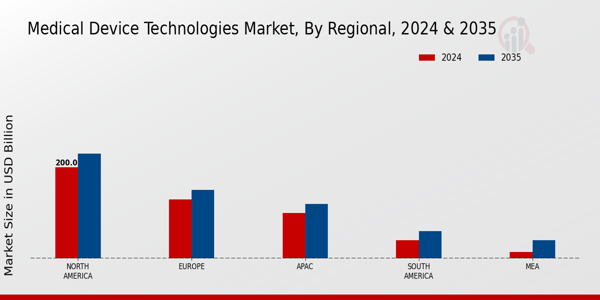Aging Population
The increasing aging population is a pivotal driver for the Medical Device Technology Market. As individuals age, they often experience a higher prevalence of chronic diseases, necessitating advanced medical devices for effective management. According to recent statistics, the population aged 65 and older is projected to reach 1.5 billion by 2050, which indicates a growing demand for medical devices tailored to this demographic. This trend compels manufacturers to innovate and develop devices that cater to the unique health needs of older adults, thereby expanding the market. Furthermore, the aging population is likely to increase healthcare expenditures, further propelling the Medical Device Technology Market as healthcare systems adapt to accommodate the rising demand for medical interventions.
Regulatory Support
Regulatory support is an essential driver for the Medical Device Technology Market. Governments and regulatory bodies are increasingly recognizing the importance of medical devices in enhancing healthcare delivery. Streamlined approval processes and supportive policies are being implemented to encourage innovation and expedite the introduction of new devices to the market. For example, the FDA has introduced initiatives to facilitate the approval of breakthrough devices, which can significantly reduce the time to market for innovative technologies. This regulatory environment fosters a climate of innovation, allowing companies to invest in research and development with greater confidence. As a result, the Medical Device Technology Market is likely to experience accelerated growth, as new devices that meet regulatory standards become available to healthcare providers and patients.
Technological Advancements
Technological advancements play a crucial role in shaping the Medical Device Technology Market. Innovations such as minimally invasive surgical techniques, advanced imaging technologies, and smart medical devices are transforming patient care. For instance, the integration of robotics in surgery has enhanced precision and reduced recovery times, making procedures safer and more efficient. The market for surgical robots alone is expected to grow significantly, reflecting the broader trend of technological integration in healthcare. Additionally, the rise of telemedicine and remote monitoring devices is facilitating better patient management and follow-up care. These advancements not only improve patient outcomes but also drive the demand for new and upgraded medical devices, thereby stimulating growth in the Medical Device Technology Market.
Rising Healthcare Expenditure
Rising healthcare expenditure is a significant driver influencing the Medical Device Technology Market. As countries allocate more resources to healthcare, there is an increasing demand for advanced medical devices that can improve patient outcomes and operational efficiency. According to recent data, global healthcare spending is projected to reach over 10 trillion dollars by 2025, reflecting a growing commitment to health infrastructure. This surge in spending is likely to result in higher investments in medical technologies, as healthcare providers seek to adopt innovative solutions that enhance service delivery. Consequently, the Medical Device Technology Market stands to benefit from this trend, as increased funding enables the development and distribution of cutting-edge medical devices that address evolving healthcare needs.
Increased Focus on Preventive Healthcare
An increased focus on preventive healthcare is emerging as a vital driver for the Medical Device Technology Market. As healthcare systems shift from reactive to proactive approaches, there is a growing emphasis on early detection and prevention of diseases. This trend is fostering the development of diagnostic devices and wearable technologies that enable continuous health monitoring. For instance, the market for wearable health devices is expected to witness substantial growth, as consumers become more health-conscious and seek tools to manage their well-being. This shift not only enhances patient engagement but also drives demand for innovative medical devices that support preventive care strategies. As a result, the Medical Device Technology Market is likely to expand, reflecting the changing landscape of healthcare priorities.


















Leave a Comment